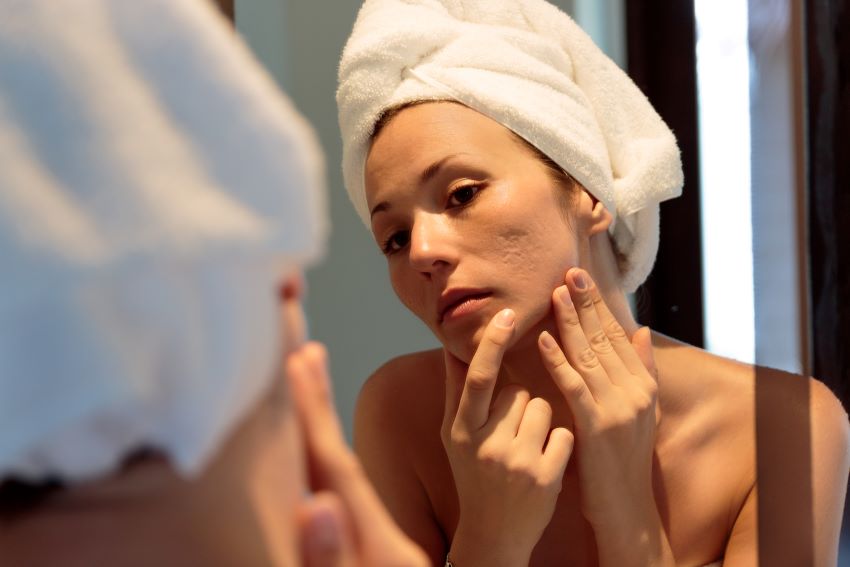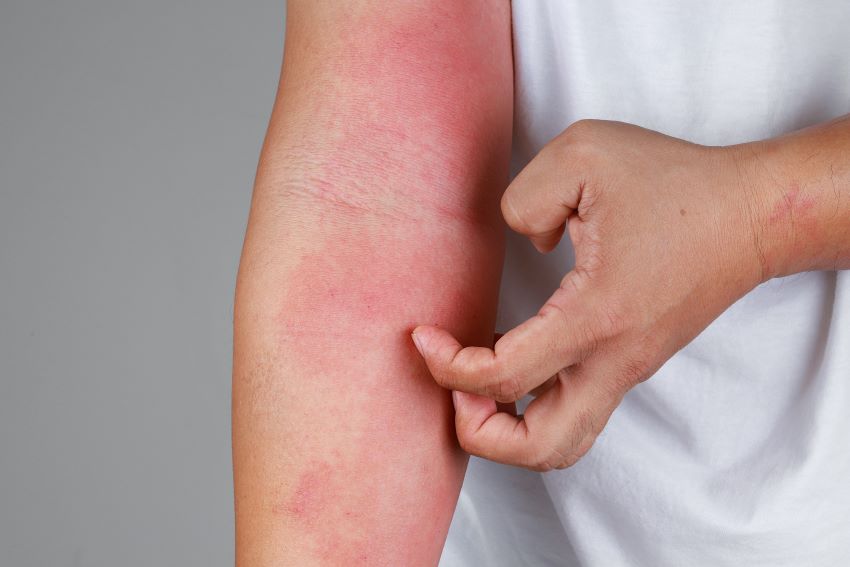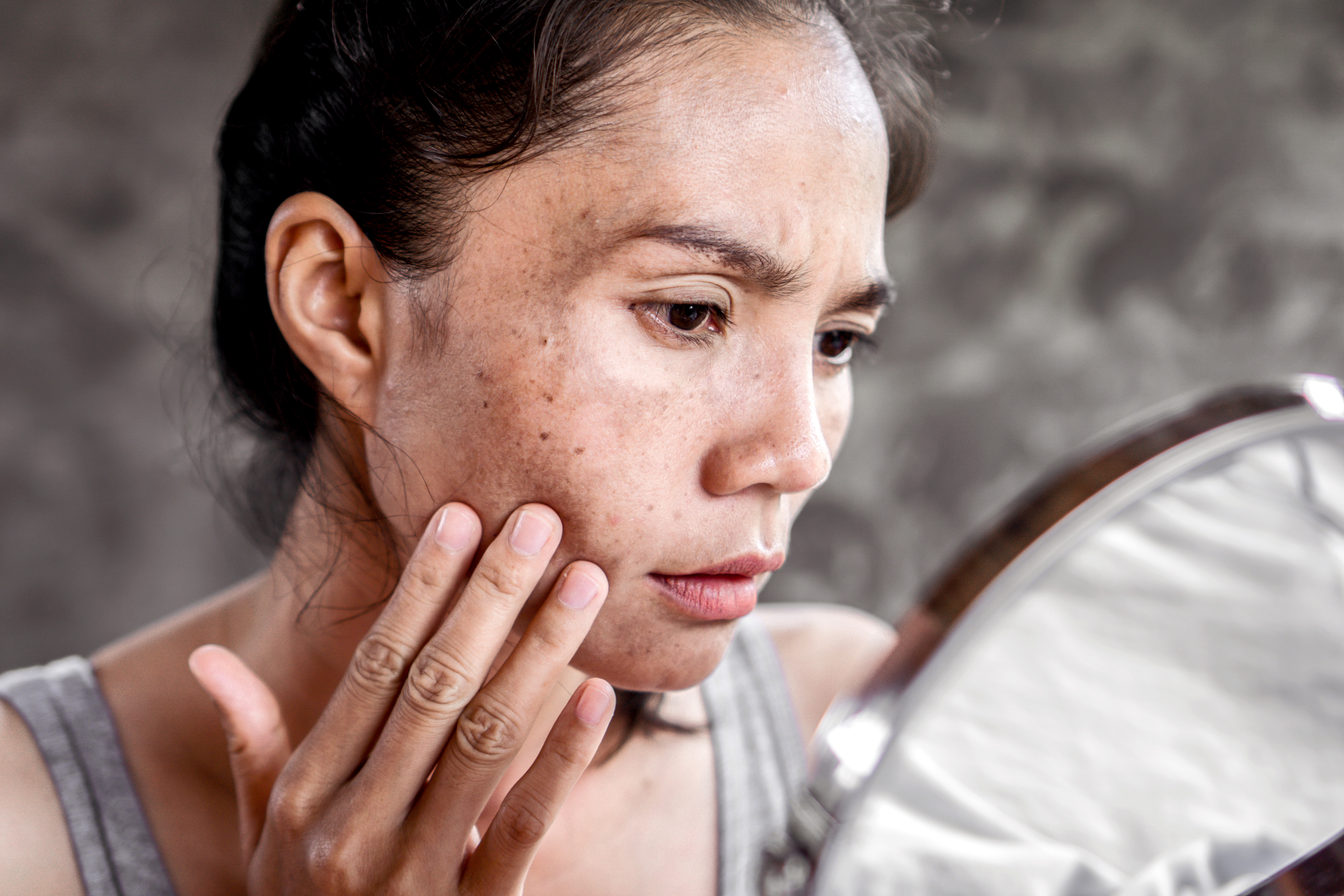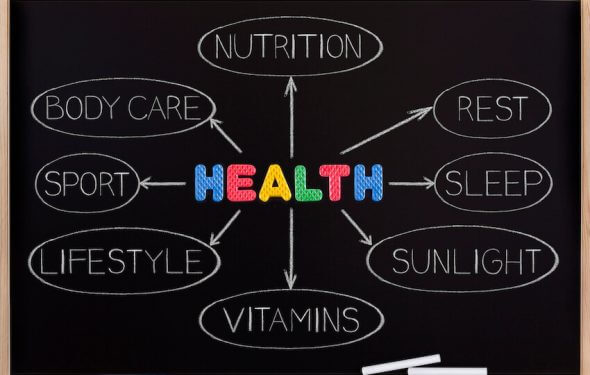What is Eczema? Eczema is an inflammatory skin condition that results in red, dry itchy skin. Also called dermatitis, eczema…

 Holistic
Holistic
Will Acne Scars Go Away? 10 Acne Treatment Solutions
What is Acne?
Acne is a skin condition most commonly found in teenagers and young adults, it occurs when hair follicles plug with oil and dead skin cells. Acne can appear as blackheads, red bumps, and whiteheads. There are many causes of acne including hormonal imbalances, medical conditions, sleep deprivation, and more.
Acne Statistics
- Acne is the most common skin condition in the United States and affects over 50 million Americans every year
- 85% of people have struggled with acne in their lives
- Over 40% of people experience some form of acne scarring
Acne Symptoms
An acne breakout starts with a clogged pore that leads to a lesion on the skin. These lesions can present differently but the most common are:
- Non-inflamed blackheads
- Red inflamed whiteheads
- Cystic bumps
- Bumps or bumpiness across the skin’s texture
- Milia (non-inflamed whiteheads)
What are Acne Scars?
Acne scars are typically caused by cystic bumps or red inflamed whiteheads. When these breakouts occur, they cause a break in the follicle wall leading to a lesion. When the lesions are smaller and shallow, they typically heal quickly. However, if there is a deeper wound, it takes much longer to heal. As the skin attempts to heal these lesions, sometimes these repairs aren’t as smooth as the original skin which results in scarring. Someone that has severe acne or cystic acne tends to suffer the most with scarring.
Types of Acne Scars
Acne scar symptoms can appear differently depending on size, shape, and depth
- Ice Pick
- These scars are identified by narrow pitted shapes in the skin. They are the most noticeable type of acne scar as they are the deepest in the skin. They are usually caused by cystic acne lesions that develop deep in your pores. Home remedies usually do not work on these types of scars.
- Boxcar
- Boxcar scars are round, crater-like depressions in your skin. They are wider than icepick scars but not as wide as rolling scars. Shallow boxcar scars can be treated with home remedies, but deeper ones are hard to get rid of.
- Rolling
- Rolling scars are wide with rounded edges that make the skin’s surface look wavy and uneven.
- Hypertrophic
- Hypertrophic scars are raised on the skin. A raised scar is developed when excess tissue develops in attempts to heal the original acne lesion.
How can you get acne scars?
- Acne prone skin – This is a severe acne that develops deep into the skin as opposed to the typical white pimples.
- Delaying treatment for inflammatory acne – The longer an acne remains untreated, the harder it will take to remove its scars.
- Picking, squeezing, or popping an acne – This only pushes the bacteria deeper into the pore.
- Genetic makeup – If acne seems to run down from your family history, you are more likely to develop it too.
Acne Scar Treatment – How to Treat Acne Scars
So will acne scars go away? While there is no “best treatment for acne scars,” below are ten different tips/solutions to consider trying when looking to heal acne scars. The first five tips for acne scar treatment are ingredients and products you can find at acne pharmacies. The second five are procedures that should be performed by a doctor or dermatologist.
- Salicylic Acid
- As one of the most common ingredients in anti-acne products, salicylic acid works to prevent acne from forming, and can also help get rid of scars. It reduces swelling, clears pores, and exfoliates the skin.
- Alpha Hydroxy Acids
- These acids are intense and work to exfoliate your skin. They can improve your skin’s rough texture through exfoliation and will help to reduce the appearance of scars.
- Lactic Acid
- Lactic acid can help to lighten dark scar tissues and also can be used as a peel to pull away dead skin cells. When it works as a peel, it helps to reduce scars and will smooth the overall texture of the skin. However, be sure to test out how your skin reacts to lactic acid as it can cause hyperpigmentation and darken skin spots even further.
- Retinoids
- Retinoids work very well in treating newer acne scars. They work to get rid of discoloration and can improve skin texture. So, when a scar is in the early stages of developing, the retinoids work to clear out the pore and reduce the outbreak making a scar less likely to develop.
- Sunscreen
- Ensuring that you use a sunscreen with an SPF of at least 30 every day over your acne scars is important as this will protect them for sun exposure. If scars are exposed to UV light they can darken, become irritated, and will be more noticeable.
- Chemical Peeling
- Chemical peels work to remove the top layer of your skin which allows new, healthier skin to show. When the peel is performed, discoloration and shallow acne scars are removed, revealing fresh healthy skin.
- Micro-Needling
- Micro-needling contributes to skin rejuvenation and the reduction of acne scarring by stimulating collagen production. Micro-needles are inserted into the scars which create extra collagen. When this occurs, new skin cells grow over the scar creating a smoother skin texture.
- Laser Treatment
- Laser treatments are one of the most popular ways to reduce scarring or deeper scars. The laser removes the top layer of skin where the scar tissue has formed. Once the scar peels off from the laser, your skin appears smoother. As the scar tissues break apart, new skin cells are encouraged to grow, and this helps scars to look less raised and red.
- Dermabrasion
- Dermabrasion is a procedure where your dermatologist uses a device that rapidly rotates against your skin to smooth it out. The procedure gently removes the top layer of your skin, promoting the growth of healthier, smoother cells. Typically, dermabrasion works best for rolling and boxcar acne scars that lie flat against the skin because these scars can easily be buffed out.
- Surgery
- There are a couple of procedures your doctor can perform to remove scars permanently. The first procedure is called a punch excision, where the individual scar is removed and repaired with stitches or a skin graft. The second, a subcision, occurs when your doctor inserts needles under your skin to loosen the scar fibers to help its appearance.
If you are struggling with acne scars such as depressed scar, raised scar, or keloid scar, there are ways to treat and remove them. Although it is not possible to get rid of deep acne scars overnight, with time and patience you will be able to heal these scars. Try out different products or reach out to your dermatologist to determine what option is best for you to remove the acne scars. Get in touch today to learn more about how our dermatology pharmacy can help.
Sources
- How To Remove Acne Scars From Face? - SKINKRAFT
- The 25 Best Derm-Approved Products For Treating Acne Scars- ELLE
- 10 TIPS FOR CLEARING ACNE IN SKIN OF COLOR - AAD
- How to Best Treat Acne Scars - healthline
- How To Prevent And Get Rid Of Acne Scars For Good - HUFFPOST
This blog is based on research and/or other scientific articles and is written by our experienced Chief Strategy Officer and Pharmacist, Ronak Desai. This blog is fact checked by our educated Pharmacist in Charge, Darshan Patel, who additionally runs our Apotheco Manhattan location.
Here at Apotheco Pharmacy Group, our goal is to provide the most up to date and accurate information on health and dermatology related topics. We do this to ensure our readers can make informed decisions based on factual content. All blogs undergo an extensive review process before posted.
This blog contains trusted sources. All sources are listed at the bottom of this article with hyperlinks that take you directly to the source.





